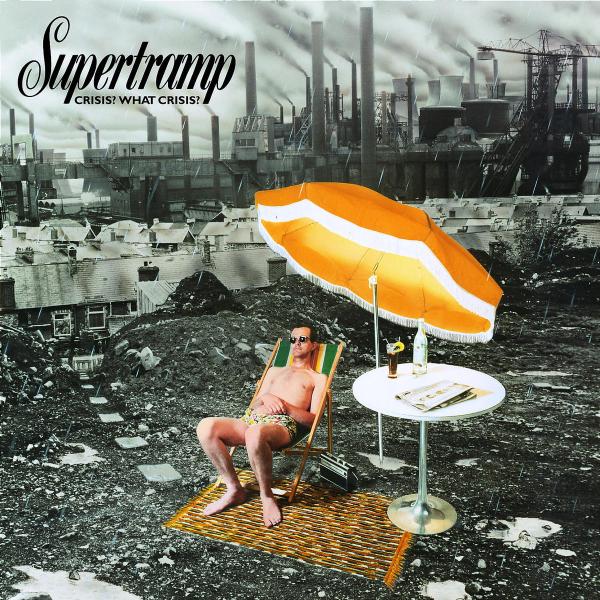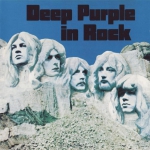Bisherige Auswahl:
keine Auswahl
Ergebnis einschränken:
|
Weitere Produkte von Supertramp |
| Bemerkungen / Titelliste: |
1.1 Easy Does It1.2 Sister Moonshine1.3 Ain't Nobody But Me1.4 A Soapbox Opera1.5 Another Man's Woman1.6 Lady1.7 Poor Boy1.8 Just a Normal Day1.9 The Meaning1.10 Two of Us |
 | | Anzahl der Tonträger: |
1 |
 | | Beschreibung: | A hit in the States and an even bigger one in the UK, this 1975 LP features more distinctive Supertramp keyboard work on great tunes like Ain't Nobody but Me; Another Man's Woman; Lady, and the Pink Floyd-ish Sister Moonshine., Runningtime: 00:00:00, Bass: Dougie Thomson, Drums, Percussion: Bob C. Benberg, Producer: Ken Scott, Producer: Supertramp, Vocals, Guitar, Keyboards: Roger Hodgson, Vocals, Keyboards: Rick Davies, Wind, Vocals: John Helliwell, Written-By: Rick Davies, Written-By: Roger Hodgson, Labelcode 4933472 (069 493 347-2), Phonographic Copyright (p) A&M Records, Copyright (c) A&M Records, Distributed By Universal Music & Video Distribution, Corp., Glass Mastered At Sony DADC, Terre Haute"Crisis? What Crisis? (Remastered)" ist das legendäre vierte Studioalbum der britischen Rockband Supertramp und erscheint hier als hochwertig remasterte CD-Version. Ursprünglich 1975 veröffentlicht, präsentiert dieses Album den unverwechselbaren Mix aus Progressive Rock und Pop von Supertramp mit Highlights wie ?Ain?t Nobody But Me? und ?Lady?. Die Neuauflage überzeugt durch eine verbesserte Klangqualität und hebt die komplexen Arrangements sowie die tiefgründigen Texte hervor. Supertramp feierte internationale Erfolge mit Alben wie ?Crime of the Century? und ?Breakfast in America?, erhielt zahlreiche Platin-Auszeichnungen und landete weltweit Chart-Hits. Herausgegeben wird diese Edition vom renommierten Label A & M Records, das seit seiner Gründung 1962 viele Musiklegenden gefördert hat. |  | | Produzent: |
Ken Scott, Supertramp |
 | | Anzahl der Titel: |
10 |
 | | Herstellernummer: |
4933472 |
 | Details zur Produktsicherheit
Verantwortliche Person für die EU:
Universal International Music B.V.
s-Gravelandseweg 80, 1217 EW Hilversum, NL
productsafety@umusic.com |  |
|
Kunden, die dieses Produkt gekauft haben, haben auch Folgende gekauft
 Eugene S. - 29.06.2023 Eugene S. - 29.06.2023  The fourth album by the English rock band Supertramp, released in 1975. Record Mirror included Crisis? What Crisis? on its end-of-year list for 1975, recognising the best albums of the year. I recommend.
|  |  HYUNG RAE K. - 01.11.2020 HYUNG RAE K. - 01.11.2020  An incredible growing album. After all these years my favourite Supertramp album. 5 stars at least!!!
|  |  Alexander S. - 08.09.2020 Alexander S. - 08.09.2020  The LP's program should perhaps be considered conceptual if you penetrate into the lyrics and eventually deduce the general wording. Each of the songs is a separate story, and at the epicenter of this kaleidoscope of events is a rushing man, a kind of collective image who, with varying degrees of success, overcomes the problems that are crumbling on him. The front cover of the album is an illustration to this thesis. Another obvious connection with the name.
Even on vinyl, forty years ago, the album's program sounded great, which undoubtedly was the merit of Ken Scott, who at various times collaborated with Pink Floyd, Procol Harum, The Jeff Beck Group, Duran Duran and many others. It was he who activated the idea of introducing "sound design" into the polyphony of the record. He also embodied it. Even at that time it was no longer unusual, but Supertramp undoubtedly added whists to this work. This is, in fact, the beginning of this program - carefree whistling on a summer street background, followed by the disturbing rhythms of "Easy Does It", smoothly turning into "Sister Moonshine" with the peculiar vocals of Roger Hodgson to the accompaniment of his acoustic guitar.
In Supertramp, as in some other teams with two equal vocalists (in Barclay James Harvest, for example, or in Status Quo), such a strict condition was practiced - for a lead. vocals were usually the author of the composition. Rick Davis was not an outstanding vocalist, but in "Poor Boy", where he imitates the sounds of the bugle as a warm-up at the very beginning, he sings just fine. There must be a slow foxtrot, which is the melodic basis of this song, which contributes to this, but Rick himself is very good. How good, however, and Roger Hodgson in "The Meaning" with the beginning, which just pulls to call "pinkfloyd" (these guys began their experiments with noise and sound effects in the late 60s, albeit of a slightly different kind). At the same time, his capriciously hysterical vocals with incredibly rich, like no other track of this LP, guitar accompaniment and smooth saxophone by John Halliwell, differs like heaven from earth from Davis' sporty cold-blooded singing.
Despite the initially unimportant commercial result, "Crisis? What Crisis?" made it to the Top 20 of the UK UK Album Chart and the Top 50 of the American. The authoritative Billboard 200 brought the record to 44th place. The British newspaper "Record Mirror" included this work by Supertramp in its annual list of the best albums of 1975.
Sometimes doubts creep in about the sincerity of the musicians when they share their memories of various negative moments accompanying their work on the disc. But if everything was so, then it had a very beneficial effect on the quality of the resulting LP. Apparently, this also happens. It was a truly mature album, perhaps even the apogee of the harmony of the creative efforts of Davis and Hodgson, no matter how critically they themselves were of what and how they did.
|  |  Andrei Arkadievich S. - 09.04.2020 Andrei Arkadievich S. - 09.04.2020  Wonderful album! For all time. Each theme is a small masterpiece. A variety of styles give a special charm. One of the best albums of the group, in my opinion. Excellent remastered edition of 2002. Booklet with information and lyrics. The sound is good in every way. Very satisfied with the purchase!
|  |  Yuriy P. - 10.12.2019 Yuriy P. - 10.12.2019  They did not collect mega-halls, packed to the eyeballs with raging fans. Most of their appearances were attended by an aesthetic audience who preferred a chamber setting, and by definition there could not be many such public. In addition, after the release of the triumphant "Crime Of The Century", too little time passed and that album, like the group itself, did not have time to find its upcoming titles. Although all the prerequisites for this have taken place. But at the same time, no one would have been surprised if everything had been reduced to the creative burnout of the young quintet. Fate, however, prepared for Supertramp a different development.
It all started with the fact that due to a hand injury on guitarist Roger Hodgson, they had to complete the Crime Tours North American Leg ahead of schedule. This led to dissatisfaction on the part of A&M Records management, which forced the group to fill this unforeseen downtime with the preparation of a new record. The musicians had no choice but to start the session in one of the studios in Los Angeles, although they were not at all ready for this. After a busy touring schedule, new ideas did not want to come into the heads of the leaders and authors of the entire Supertramp repertoire, Rick Davis and Roger Hodgson - the group needed a break. But meanwhile, he was short of time for everything - just a few weeks instead of the usual several months.
They were saved then by the fact that a lot of previously unrealized material of dubious quality had accumulated in Supertramp's storerooms. And also an excellent relationship with sound engineer Ken Scott, who “polished” their previous “Crime ...” and whose participation in the work on the new LP as a co-producer inspired hope that this seemingly doomed record was still will sound.
Back in March 1975, four previously unreleased songs ("Sister Moonshine", "Lady", "Just A Normal Day" and "Another Man's Woman") were voiced by a group in London's Hammersmith Odeon and even recorded by the British Air Force. From hopelessness, it was decided to take them as a basis, despite the fact that these semi-finished products did not inspire the musicians themselves. In addition, rehearsals were difficult at first. And in general, the situation that prevailed at that time in the studio was far from ideal. The musicians did not like the atmosphere, did not like the material that they obtained. New compositions of “Ain't Nobody But Me” by Davis and “The Meaning” by Hodgson have identified yet another “Crime ...” that has been outlined, but is not yet an acute problem to start beating all the bells. The creative disagreement between the two leaders of Supertramp was finally exposed and made itself felt. A story that is as old as the world. And if in life these two kept completely companionship, then in the work of Rick and Roger appeared as convinced antagonists. There were only memories of the past spiritual unity of the first years of the existence of Supertramp.
Years later, R. Hodgson told the popular music publication "Sound": "Crisis? ..." for us began to mean more than for everyone else just the name of our next record, because it really was a crisis album. He could become even better than "Crime Of The Century", but he didn’t, we had too much negative in our studio. We really did not like what we were doing, in the end we got a kind of craft that many even liked. But that wasn’t enough for us. "However, later, Hodgson somehow somehow let slip that Crisis? ... was his favorite album from Supertramp.
A set of ten seemingly diverse compositions does not contain an obvious favorite with claims to a hit. But at the same time, a surprisingly compact, smooth and holistic program developed. Davis and Hodgson, two very different musical personalities, whose directly opposite creative principles, contrary to, rather than due to, contributed to the appearance of attractive harmonies, equally repulsive and aspiring to each other. On this contradiction came "Just A Normal Day" and "A Soapbox Opera", incredibly sincere novels. The melancholic blues "Just A Normal Day" for this album is simply unique - with the string section of Richard Hewson and the touching Davis keyboards, which provided the instrumental segment of the composition, but most importantly, with the mesmerizing vocal relay race of Rick and Davis. A rare example of the unity of opposites. But the proximity of such seemingly different in style styling introduces a positive dynamic contrast, such as the "Sister Moonshine" of sophisticated Hodgson and the "Ain't Nobody But Me" of heavyweight Davis.
The LP program should perhaps be considered conceptual if you penetrate the lyrics and deduce as a result the general wording. Each of the songs is a separate story, and at the epicenter of this kaleidoscope of events is a rushing man, a kind of collective image that overcomes problems that are crumbling with him with varying degrees of success. As an illustration to this thesis - the front cover of the album.
|  | |
| |
|
 |
 |
|







![Supertramp - Live In Paris '79 (DVD+2CD) [US-Version, Regio 1/A]](https://img.grooves.land/images/cover/482/020/fa3y0mem.j11)

























